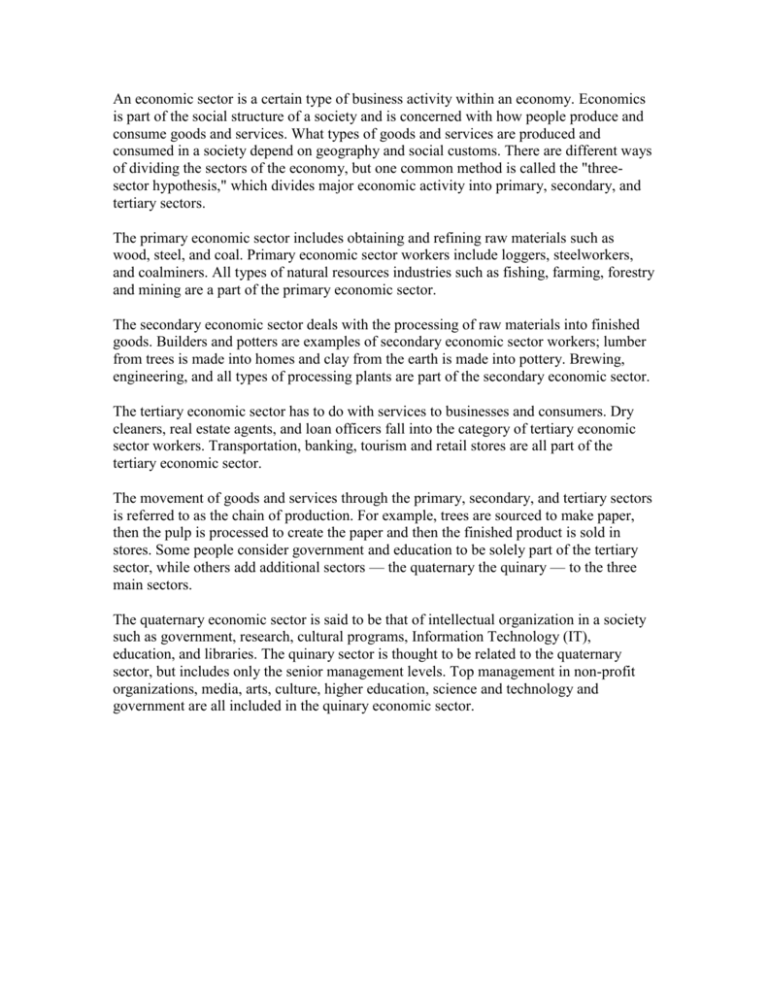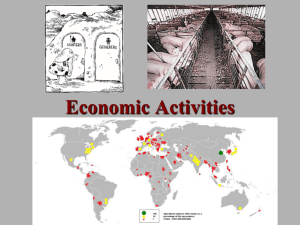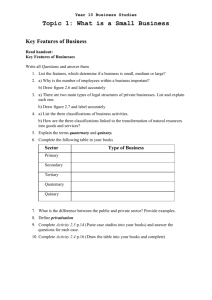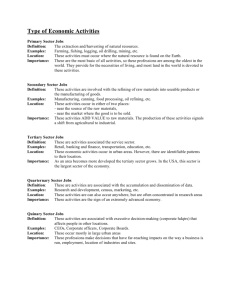File
advertisement

An economic sector is a certain type of business activity within an economy. Economics is part of the social structure of a society and is concerned with how people produce and consume goods and services. What types of goods and services are produced and consumed in a society depend on geography and social customs. There are different ways of dividing the sectors of the economy, but one common method is called the "threesector hypothesis," which divides major economic activity into primary, secondary, and tertiary sectors. The primary economic sector includes obtaining and refining raw materials such as wood, steel, and coal. Primary economic sector workers include loggers, steelworkers, and coalminers. All types of natural resources industries such as fishing, farming, forestry and mining are a part of the primary economic sector. The secondary economic sector deals with the processing of raw materials into finished goods. Builders and potters are examples of secondary economic sector workers; lumber from trees is made into homes and clay from the earth is made into pottery. Brewing, engineering, and all types of processing plants are part of the secondary economic sector. The tertiary economic sector has to do with services to businesses and consumers. Dry cleaners, real estate agents, and loan officers fall into the category of tertiary economic sector workers. Transportation, banking, tourism and retail stores are all part of the tertiary economic sector. The movement of goods and services through the primary, secondary, and tertiary sectors is referred to as the chain of production. For example, trees are sourced to make paper, then the pulp is processed to create the paper and then the finished product is sold in stores. Some people consider government and education to be solely part of the tertiary sector, while others add additional sectors — the quaternary the quinary — to the three main sectors. The quaternary economic sector is said to be that of intellectual organization in a society such as government, research, cultural programs, Information Technology (IT), education, and libraries. The quinary sector is thought to be related to the quaternary sector, but includes only the senior management levels. Top management in non-profit organizations, media, arts, culture, higher education, science and technology and government are all included in the quinary economic sector.











